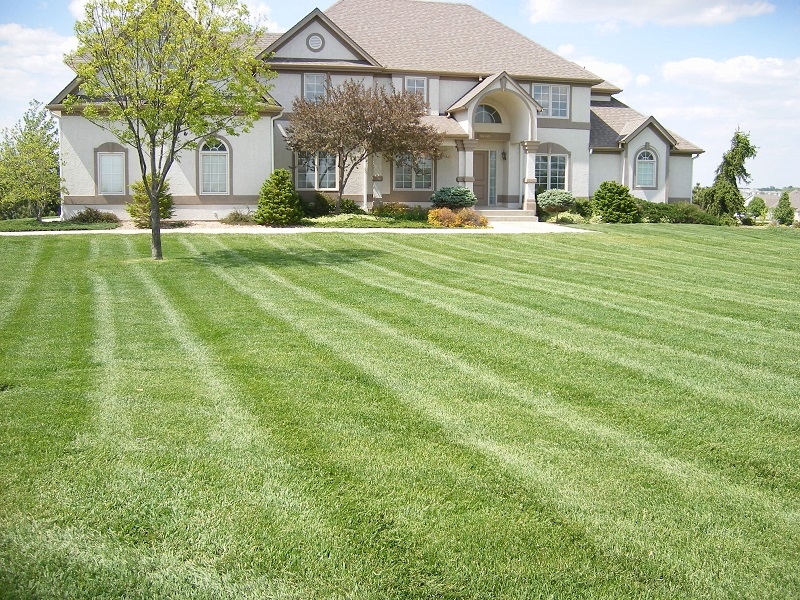You’ve had your lawn for a season – thriving in your beautiful garden – looking lush and healthy for a couple of months. And, being the responsible homeowner that you are, you appreciate your patch of green and want to keep it healthy and thriving always.
To ensure you don’t get stumped when problems crop up in your lawn (because they will), providers of professional lawn care services in Columbus, OH say that when it comes to lawn care and gardening, it’s better to be safe than sorry – so it pays to know ahead of time what may be coming.
To keep you and your lawn on the safe side, here’s a rundown of the most common lawn problems and ways you can solve them:
1. Bald or dry patches, and thatch
In a perfect world, as long as you do your share of the lawn care or get expert help from a trusted lawn care company from Delaware, Ohio (or wherever you may live), your lawn would be immune from thatch, dead grass or bare dirt spots.
But no, these things happen, and when they do, here’s what you should do:
- For a bare dirt spot, you need to loosen the soil first with a garden rake or a similar tool. Then you can spread the seed as required and lightly work it into the soil together with a bit of compost.
- For thatch or dead grass, you’ll need to get rid of these to expose the dirt. You may opt to spread a thin layer of real topsoil upon which you will spread the seed, working in the seed to the top 1/4 part of the soil. You can then add a bit of compost on top or, alternatively, pelletized newspaper mulch.
2. Annual weeds
Crabgrass, spurge, black medic, purslane, and oxalis share something in common – they are all classified as annual weeds. They live only for one season but flood the soil with their seeds before they eventually die.
In this case, prevention is better than cure, so ensure that your lawn stays lush and healthy all year long, and try to mow it high for most of the year. To make your lawn thicker, try super seeding late in the summer, and add microclover to your lawn to help crowd out these pesky annual weeds.
Also, avoid frequent light watering as it encourages the germination of annual weed seed buried in the soil.
3. Billbugs
Every good gardener knows that not all insects are harmful. In fact, ladybugs, damsel bugs, aphid midges, ground beetles and green lacewings are only some of the better-known friendly bugs that feed on common garden pests.
Billbugs, however, are an entirely different matter.
These pesky little buggers lay their eggs right inside each grass plant. Then the eggs turn into larvae that bore down through the grass, eating the plant as it goes down, effectively turning once healthy green grass into brown.
Address a billbug invasion by seeding naturally bug-resistant grasses, or by applying beneficial nematodes that will control the larvae, thereby preventing them from wreaking havoc on your lawn.
4. Pet urine burn patches
Fido may be your best furry friend, but if your dog has gotten used to urinating in your lawn, it’s bad news for your turf.
The high level of nitrogen salt in your pet dog’s urine is actually beneficial and can help fertilize soil – but only in small doses. Too much of it can lead plants to die in Fido’s favorite peeing area – and that includes grass.
Watering the dog pee area after Fido does his business can help, as well as using dog urine neutralizers.
However, nothing beats teaching your pet friend to pee into mulch or somewhere far away from your green pets.
5. Chinch bugs
Another type of harmful bugger that smartly changes its appearance to sometimes even resemble its own predator, the chinch bug is attracted to stressed grass struggling to flourish under the hot sun.
Chinch bugs suck out the juice from the weakened grass and inject their saliva so the grass turns brown.
To discourage chinch bugs from setting up shop in your lawn, seed using chinch-bug resistant grass varieties containing endophytes (beneficial microorganisms). If you see any chinch bugs creeping about, spread some diatomaceous earth in the affected areas.
Keeping your lawn healthy and thriving all year long requires a bit of time, effort and commitment on your part.
But if you are busy and always pressed for time, you can always get lawn and garden experts onboard to help you. They will professionally manage your garden space so you get to enjoy it while also being able to use your time for other important pursuits.

